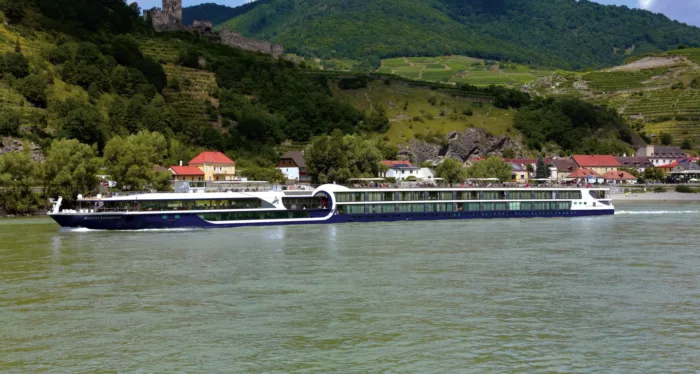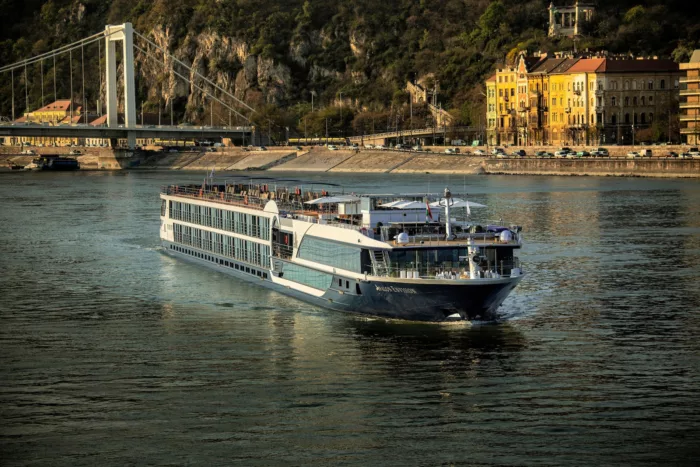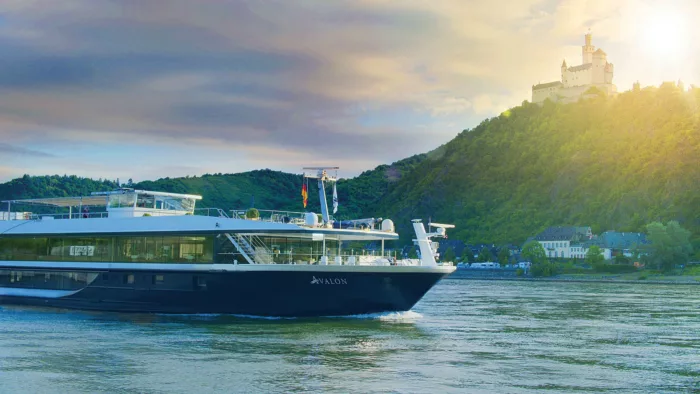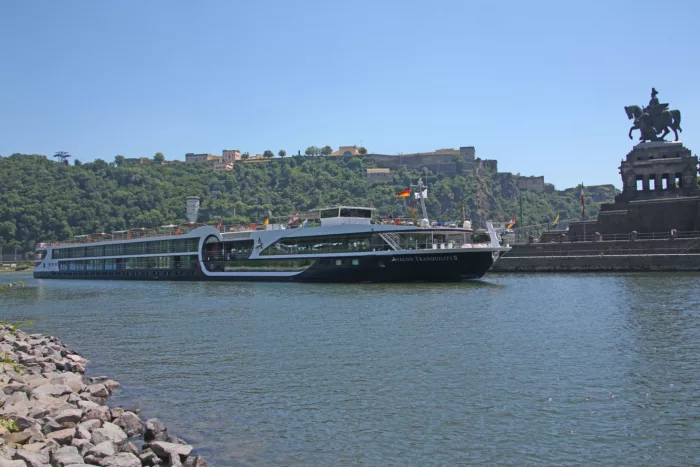
Avalon Waterways
Avalon's suite ships in Europe and Southeast Asia boast wall-to-wall windows that transform cabins into open-air balconies, and there are also river-facing beds to make the most of passing views.
The line’s Active & Discovery sailings have optional action-packed experiences alongside traditional shore tours.
Avalon Waterways also offers short-break cruises of three and four nights.
166
Passengers
47
Crew
2014
Launched
2775t
Tonnage
135m
Length
12m
Width
13kts
Speed
4
Decks
EUR
Currency
Cruise Itinerary
Days 1 - 2
Amsterdam, Netherlands
Day 3
Cologne, Germany
Day 4
Rüdesheim, Germany
Day 5
Miltenberg, Germany
Day 6
Würzburg, Germany
Day 7
Volkach, Germany
Day 8
Bamberg, Germany
Day 9
Roth, Germany
Day 10
Regensburg, Germany
Day 11
Passau, Germany
Day 12
Melk, Austria
Day 13
Vienna, Austria
Days 14 - 15
Budapest, Hungary

Days 1 - 2
Amsterdam, Netherlands

Day 3
Cologne, Germany

Day 4
Rüdesheim, Germany

Day 5
Miltenberg, Germany

Day 6
Würzburg, Germany

Day 7
Volkach, Germany

Day 8
Bamberg, Germany

Day 9
Roth, Germany

Day 10
Regensburg, Germany

Day 11
Passau, Germany

Day 12
Melk, Austria

Day 13
Vienna, Austria

Days 14 - 15
Budapest, Hungary
Ship Details


Avalon Waterways
Avalon Impression
Part of Avalon's award-winning fleet of Suite Ships, the Avalon Impression features two full decks of Panorama Suites with wall-to-wall, floor-to-ceiling panoramic windows that transform the living space into river cruising's only Open-Air Balcony.
Cabins
All Prices







